CalTrout announces Bay Area Conservation Program
CalTrout is launching a new regional conservation program focused on efforts in the San Francisco Bay Area, headed by Program Manager, Patrick Samuel. Patrick has recently completed an eight-month fact-finding mission – meeting with stakeholders and conducting site visits throughout the greater Bay Area – to assess fisheries conservation, restoration, and educational outreach opportunities from Marin to Santa Cruz counties. The addition of the Bay Area program brings the number of CalTrout’s regions to six along with North Coast, Mt. Shasta/Klamath, Central Valley, Sierra, and South Coast.
The Bay Area program will implement a mix of restoration projects in highly productive estuaries and heavily altered urban/rural watersheds both on the coast and in San Francisco Bay itself, and develop targeted outreach and education on how the salmon and steelhead in our backyards are indicators of healthy watersheds that we all depend upon.
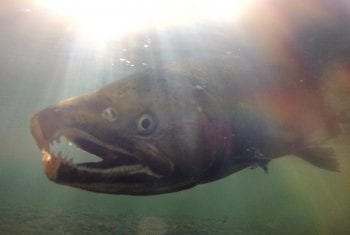
Coho salmon (Nick Bauer)
This region is critical to addressing the recovery of critically endangered Central California Coast (CCC) coho salmon and Central California Coast steelhead. Marin County is the southernmost extent for wild CCC coho salmon. According to the 2017 State of the Salmonids report by CalTrout and UC Davis, their populations have declined in excess of 95% in the last half-century due to habitat degradation, dewatering, and impacts from climate change − increased stream temperatures, streamflow variability, and changing ocean conditions – that dictate salmon growth and survival. Nearly all the remaining CCC streams with coho have populations of fewer than 100 spawning adults, unless enhanced through hatcheries. The Bay Area program will prioritize watersheds for restoration that have the most promising potential to support salmon recovery and are in most need of attention. These areas will include estuaries, critical land-sea interface habitat for salmon rearing and growth; working agricultural and ranching landscapes surrounding coho streams; and waterways that have been blocked by infrastructure, prohibiting volitional fish passage.
Stay tuned to find out where CalTrout is considering conservation efforts in coastal and San Francisco Bay watersheds. We’ll be announcing more information in the Spring 2018 issue of The Current, CalTrout’s quarterly e-magazine.
We’d like to hear from you! What aspect of CalTrout’s Bay Area Conservation Program is most important to you? Please take our survey.
Check out Patrick’s photos from his site visits:



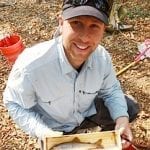
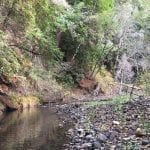
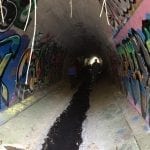
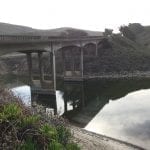
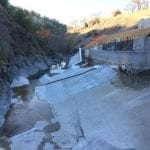
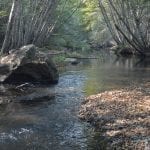
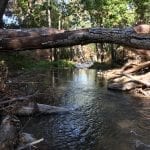
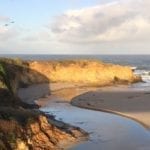
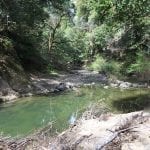
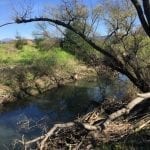
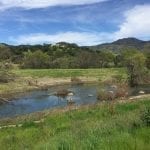



5 Comments
What you are doing is really great! I’m a little disappointed that SanFrancisquito Cr. is not mentioned. It runs as a border between Santa Clara and San Mateo County. There is a few steelhead in that Creek, and there was once salmon in there as well. Go to beyond searsville dam to learn about Matt Stoeckers fight with Stanford University to remove Searsville Dam.
Hey Cliff, thanks for the info! If you’d like to further discuss, I’m sure Patrick (Program Manager for Bay Area program) would be up for it. His email is psamuel@caltrout.org. He just finished up a mission going to likely every steelhead water in the Bay. As best that I can speak on it, there was a rigorous selection process to decide on top priority sites. The criteria first and foremost required the area to be historically productive habitat for salmon and steelhead, and must retain key habitat features which will support the recovery of salmon runs. Additionally, criteria included offering the best opportunity for CalTrout to presently engage as good-faith partners with local, state, and federal partners and stakeholders; and finally, the site is currently suffering from outstanding gaps in capacity, expertise, funding, or all of the above – where CalTrout can ensure that the restoration projects occur as expeditiously as possible.
Hopefully, the Bay Area program will be expand in the future to include many more sites, since there are so many opportunities for salmon recovery in the Bay Area.
Our organization has worked with Matt and his company several times, and support Beyond Searsville Dam’s efforts immensely.
If you’re interested in learning about our other dam removal projects across the state, check out http://www.caltrout.org/dams.
I’m interested in Olema Creek. Olema Campground is on of our favorites and we have been staying there for over 50 years. In that time we have watched Olema Creek go from a healthy, flowing stream with good spawning beds to clogged, over grown stagnant mess. Last year I asked the manager of the park about why the stream has become so bad. He replied that the Marin County environments want it that way. Their theory is that all streams and waterways should be left to nature. Doing anything to clean up the streams is a violation of local law and subject to fines. How does that play with your plans to clean up Bay Area streams?
I’m anticipating that your efforts announced this spring will include the Alameda Creek waterway. With a watershed that spans more than 680 square miles of the East Bay, it is a very significant habitat restoration project for the Central California Coast steelhead population. I attended the ribbon cutting ceremony for the fish ladder being constructed on Rubber Dam #3 which leaves one remaining fish ladder (projected 2019 launch) left to open up the passage from sea to spawning grounds once again. An important aspect of this will be improving the habitat at the mouth of Alameda Creek to develop a healthy marshland ecosystem which could provide valuable juvenile habitat for fish preparing to head out to sea. I may be a little bias since it this the first place I caught my first fish as well as my first steelhead back in the 60’s. Look forward to hearing what you come up with!